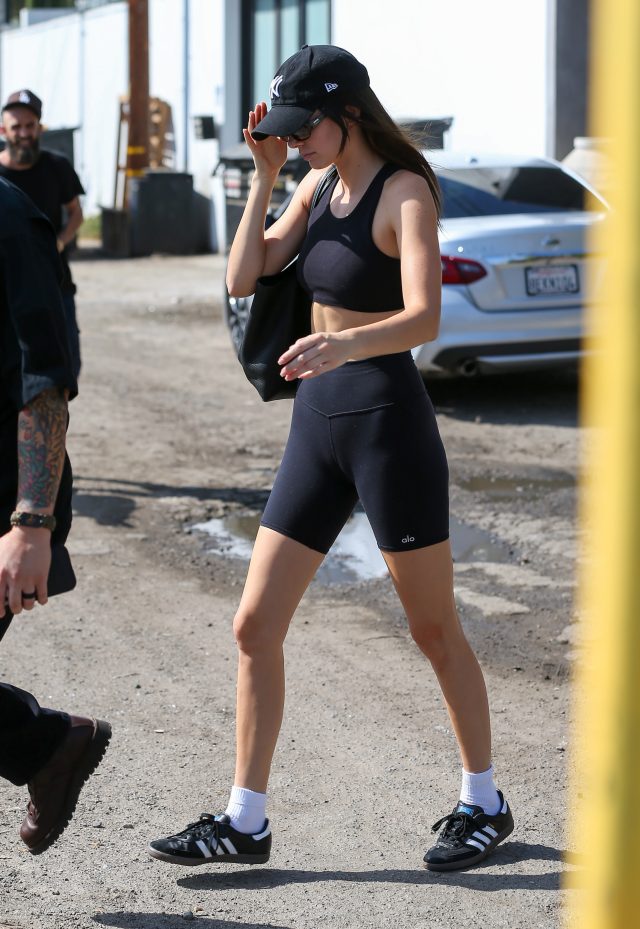With Yeezys in the rear-view mirror, Sambas and Gazelles are helping drive the big Adidas reboot
Revenues from Adidas’s footwear segment were up 17% in the second quarter as sentiment towards the Adidas brand globally improves after a rocky few years.

Adidas has been trying to regain its mojo for the last few years as it battled the fallout of its infamous Yeezy partnership with rapper Kanye West.
But its efforts may finally be paying off—and it’ll have its Samba and Gazelle shoes to thank for it, not just the Yeezys.
The German sportswear company is seeing customers come around as they react “positively” to its new product launches, among other things.
The company reported a rebound in second-quarter sales, growing 11% on a currency-neutral basis. Its wholesale business, up 17%, reflected booming demand from retailers that sell Adidas products, such as JD Sports and Foot Locker.
The company’s operating profits for the first half of the year ending June 30 were €682 million—up nearly 190% from the same period a year ago.
“We see improved sentiment for the Adidas brand globally,” CEO Bjørn Gulden said in a statement. “Both the consumers and our retail partners continue to show a strong and increased interest in our brand and our products.”
Revenues from Adidas’s footwear segment were up 17% in the three months to June, while the apparel division that makes football jerseys also saw a 6% boost in sales as the winning teams of Copa America and UEFA tournaments sported Adidas gear.
The German company suffered a setback in North American sales after discontinuing the Yeezy line, which was announced in 2022. Over the 2023 financial year, Adidas sales in the region plunged 16% while remaining flat or increasing in other geographies.
During the first quarter of the current year, North America continued to be a weak spot. However, the business is showing signs of recovery. Adidas noted an 8% decline in North American sales, which was attributed “solely to the significantly smaller Yeezy business,” according to its earnings report. Excluding Yeezys, which contributed about 14% or €50 million to Adidas’s operating profits, revenues in the region grew.
Meanwhile, European sales rose 19% for the quarter.
The strong numbers from Adidas validate CEO Gulden’s turnaround strategy as he cashes in on the popularity of its sneaker lines while driving the brand’s presence at retail stores. Previously, the company aimed to double down on its digital and direct-to-consumer sales strategy to remove third-party sellers, repelling retailers in the process.
A mix of lower consumer spending and the termination of Adidas’s highly lucrative tie-up with West put pressure on the company’s performance. Other setbacks include a halt in the sale of some jerseys over their resemblance to a Nazi symbol as well as losing a seven-decade-long partnership with the German national football team to its rival, Nike.
Under Gulden, who became CEO last year, the company has sought to clear out its Yeezy inventory and focus on reigniting the brand. He has introduced new lines of merchandise and ramped up the rollout of blockbuster shoes like the Sambas, worn by A-listers like Kendall Jenner, Jennifer Lawrence, and even former British Prime Minister Rishi Sunak.

Bellocqimages/Bauer-Griffin/GC Images
Adidas raised its full-year guidance for the second time in three months in July, feeding into the optimism surrounding the company.
Questions about how Adidas will continue to boost its appeal and maintain its financial returns linger.
But in the meantime, the sportswear giant’s business is going strong—shares are up 31% year-to-date, and its 2024 outlook contrasts Nike’s ominous one, pointing to a second half worth watching.





